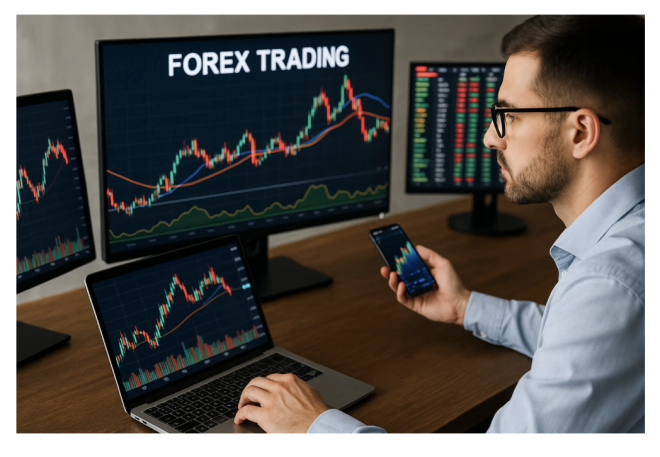- Change theme
How Technology Is Changing Forex

Explore how AI, automation, and mobile apps are changing Forex trading in 2025, and why technology is both an advantage and a responsibility for trade
02:44 26 July 2025
Not too long ago, Forex trading was something that happened in big banks, hedge funds, and institutional desks. Fast forward to 2025, and anyone with a smartphone can access the same markets that used to be out of reach. The rise of online platforms, mobile apps, and advanced analytics has completely transformed how traders operate.
But one of the most significant shifts has been the role of technology in simplifying complex processes, providing real-time insights, and leveling the playing field for retail traders. Let’s explore how technology is reshaping Forex and what that means for both beginners and seasoned traders.
1. Mobile Trading Apps: Trading in Your Pocket
The most obvious change is mobility. Traders no longer need multiple monitors and specialized terminals to participate in the market. Apps like MetaTrader, cTrader, and broker-specific platforms allow anyone to open, close, and manage trades directly from their phone.
Mobile apps now come with:
- Advanced Charting: Technical analysis tools once limited to desktop platforms.
- One-Click Trading: Speed is critical in volatile markets, and apps now make execution seamless.
- Push Notifications: Alerts for price levels, margin calls, and economic news.
Convenience, however, comes with responsibility. It’s easier than ever to trade impulsively, so setting alerts and managing risk remains crucial.
2. Artificial Intelligence and Predictive Analytics
AI has made its way into Forex trading in a big way. Predictive algorithms analyze vast amounts of historical and real-time data to forecast potential market movements. While no tool can guarantee accuracy, machine learning models are helping traders spot trends and patterns that were once difficult to detect manually.
AI is particularly useful for:
- Sentiment Analysis: Gauging market mood from news and social media.
- Automated Strategies: Bots that execute trades based on pre-set parameters.
- Risk Assessment: Real-time evaluation of position exposure and volatility.
3. Automation and Copy Trading
Automation is a game changer for traders who lack time or expertise. Copy trading platforms allow users to replicate the strategies of successful traders automatically. While this democratizes trading, it also introduces risks, mainly over-reliance on someone else’s judgment.
For those who prefer more control, semi-automated systems are available, where traders approve signals before execution.
4. The Growing Role of Forex Signals
One major area of technological advancement is the delivery and quality of forex signals. In the past, signals were shared in email newsletters or chat forums. Today, they’re integrated into apps, social trading platforms, and real-time messaging channels.
Signals now often include:
- Entry and exit points
- Risk/reward ratios
- Stop-loss and take-profit levels
- Market context and analysis
This evolution means traders can make faster, more informed decisions. But caution is essential: signals are tools, not guarantees. They should complement your analysis, not replace it.
5. Blockchain and Transparency in Trading
Blockchain technology is slowly entering Forex through decentralized trading platforms and tokenized assets. While mainstream adoption is still in progress, the benefits are clear:
- Reduced Counterparty Risk: Trades can be settled through smart contracts.
- Lower Fees: Cutting out intermediaries can make trading more cost-effective.
- Greater Transparency: Blockchain ensures trade records are immutable and verifiable.
6. Education Through Technology
One overlooked benefit of technology is the access to education. Webinars, online courses, and interactive trading simulators are more common than ever. This democratization of knowledge has opened doors for aspiring traders who previously lacked resources.
Combine this with social trading communities, and new traders now have more ways than ever to learn and grow in a supportive environment.
The Future: What’s Next for Forex?
Looking ahead, expect even more integration of AI, automation, and decentralized solutions. As markets become more connected and technology advances, speed and adaptability will define successful traders.
But the fundamentals remain the same: no matter how advanced the tools, discipline and strategy will always be the backbone of profitable trading.
Final Thoughts
Technology has revolutionized Forex trading by making it faster, more accessible, and data-driven. From mobile apps to advanced AI models, traders now have more resources at their disposal than ever before. However, these tools should empower- not replace - sound judgment and strategic thinking.
The key is balance: leverage technology, but keep learning and improving your own skills. Whether you’re using advanced analytics, automation, or relying on insights from forex signals, the ultimate responsibility for your trades still rests with you.
